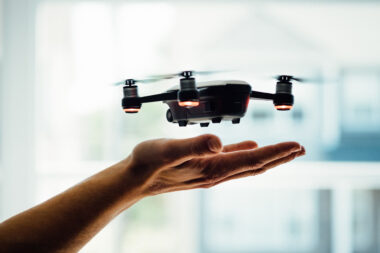Augmented Reality (AR) is transforming the automotive industry by revolutionizing design and visualization processes. From vehicle configuration to virtual test drives and immersive showroom experiences, AR technologies are reshaping how automakers and consumers interact with automobiles.
Introduction to AR for Automotive Design and Visualization
Augmented Reality (AR) technology overlays digital information and virtual elements onto the real-world environment, creating immersive and interactive experiences. In the automotive industry, AR is increasingly used for design visualization, allowing designers, engineers, and consumers to interact with virtual vehicles in realistic settings.
AR Applications in Automotive Design and Visualization
AR-Powered Vehicle Configurators
AR-enabled vehicle configurators allow consumers to customize and visualize their dream cars in real-time. Using AR applications on mobile devices or AR glasses, users can choose different colors, trims, and options to personalize their vehicles. Virtual overlays superimpose selected features onto the user’s surroundings, providing a lifelike preview of the customized car.
Virtual Test Drives
AR technology enables virtual test drives, allowing users to experience driving various vehicles without leaving their homes. Through AR headsets or immersive displays, users can explore different driving scenarios, interact with vehicle controls, and simulate driving experiences in realistic environments. Virtual test drives provide valuable insights into vehicle performance and features before making purchasing decisions.
Immersive Car Showroom Experiences
Automotive retailers are leveraging AR to create immersive showroom experiences for customers. AR applications installed in showroom environments allow visitors to interact with virtual vehicles, explore interior features, and visualize customization options. AR-powered showroom experiences enhance customer engagement, facilitate informed decision-making, and differentiate brands in a competitive market.
Hardware Components
AR Headsets/Glasses:
AR headsets or smart glasses serve as the primary interface for users to view augmented content.
These devices feature integrated displays, cameras, sensors, and processing units to capture real-world scenes and superimpose virtual elements.
Examples include devices like Microsoft HoloLens, Magic Leap One, and various AR-enabled smartphones and tablets.
Cameras and Sensors:
Cameras and depth sensors capture the user’s surroundings, allowing AR systems to understand the physical environment and track the user’s movements.
Depth sensors provide accurate depth perception, enabling virtual objects to interact realistically with real-world surfaces and objects.
Software Algorithms
Computer Vision:
Computer vision algorithms analyze camera input to identify and track physical objects and surfaces in the environment.
These algorithms use techniques like feature detection, object recognition, and simultaneous localization and mapping (SLAM) to create a digital representation of the user’s surroundings.
Image Processing:
Image processing algorithms enhance real-time camera feed quality, adjusting brightness, contrast, and color balance to improve visual fidelity.
These algorithms may also perform edge detection and object segmentation to isolate physical objects and surfaces for AR content placement.
Rendering:
Rendering algorithms generate virtual objects and overlay them onto the real-world scene captured by the camera.
These algorithms consider lighting conditions, perspective, and occlusion to ensure that virtual objects appear seamless and integrated with the physical environment.
Rendering techniques such as foveated rendering may be employed to optimize performance and conserve computational resources.
Data Processing and Interaction
Data Fusion:
Data fusion techniques integrate information from multiple sensors, including cameras, depth sensors, and inertial measurement units (IMUs), to create a comprehensive understanding of the user’s surroundings.
By combining data from different sources, AR systems can accurately track the user’s movements and maintain alignment between virtual and physical elements.
Interaction Techniques:
AR interfaces allow users to interact with virtual objects using gestures, voice commands, or handheld controllers.
Gesture recognition algorithms interpret hand movements captured by the camera, enabling users to manipulate virtual objects and navigate AR content intuitively.
How It Works in Practice: A Detailed Look
Augmented reality (AR) technology has revolutionized automotive design and visualization processes, offering innovative solutions to enhance the entire lifecycle of vehicle development, from design conception to customer experience. Here, we delve into how AR is transforming automotive design and visualization in practice, exploring its key features, functionalities, and real-world applications.
Design Visualization:
AR enables designers and engineers to visualize virtual car models in a three-dimensional space, allowing them to assess design concepts and iterate rapidly. Design teams can view virtual prototypes from different angles, inspecting details such as body contours, interior layouts, and lighting effects with precision. For example, during the initial design phase of a new vehicle model, designers can use AR headsets or devices to project virtual prototypes onto physical surfaces, enabling them to evaluate design proportions and ergonomics in real-world environments.
Interactive Configurators:
One of the standout features of AR in automotive design is its interactive configurator tool, which empowers customers to customize virtual car models according to their preferences. Users can select various options such as paint colors, wheel designs, and interior trims, seeing the changes reflected instantly in the virtual representation of the vehicle. For instance, a prospective car buyer can use a smartphone app to explore different color options and interior finishes, personalizing the vehicle to match their desired specifications before making a purchase decision.
Collaborative Design Studios:
AR facilitates collaborative design sessions among multidisciplinary teams, allowing designers, engineers, and stakeholders to interact with virtual car prototypes simultaneously. Participants can join virtual meetings using AR headsets or devices, sharing their perspectives and making real-time modifications to the design. This collaborative approach fosters creativity, accelerates decision-making, and ensures alignment across teams. For example, design teams located in different geographic locations can collaborate on a virtual car project, visualizing and refining design concepts together in a shared virtual space.
Virtual Test Drives:
AR technology enables virtual test drive experiences, allowing customers to explore and interact with virtual car models in simulated driving environments. Users can experience features such as cockpit displays, driver assistance systems, and infotainment interfaces as if they were behind the wheel of a real vehicle. For instance, a potential car buyer can take a virtual test drive using a web-based AR application, navigating through virtual landscapes and experiencing different driving scenarios to assess vehicle performance and handling characteristics.
Maintenance Assistance:
AR glasses equipped with heads-up displays provide service technicians with augmented information overlays during vehicle maintenance and repair procedures. Technicians can access repair instructions, diagnostic data, and service manuals in their field of view, enabling them to perform tasks more efficiently and accurately. For example, a service technician wearing AR glasses can scan a vehicle’s engine bay to access visual overlays indicating component locations and step-by-step repair procedures, reducing repair times and minimizing errors.
Benefits of AR for Automotive Design and Visualization
Enhanced Customer Engagement
AR technologies offer engaging and interactive experiences that captivate customers’ attention and drive interest in automotive products. By providing personalized and immersive experiences, AR-powered design and visualization tools attract and retain consumer interest throughout the purchasing journey.
Improved Design Iteration and Collaboration
For automotive designers and engineers, AR streamlines the design iteration process and facilitates collaboration across teams. By visualizing digital prototypes in real-world environments, designers can evaluate design concepts, identify potential issues, and iterate rapidly to optimize vehicle designs. AR also enables remote collaboration, allowing dispersed teams to collaborate seamlessly on design projects.
Cost and Time Savings
AR-based design and visualization tools reduce the need for physical prototypes and mockups, resulting in cost savings and accelerated development timelines. By simulating virtual environments and digital prototypes, automotive manufacturers can minimize material costs, shorten design cycles, and bring new vehicles to market faster and more efficiently.
Future Prospects and Challenges
As AR technology continues to evolve, the automotive industry is poised to embrace new advancements and applications. Future developments may include:
Integration of AR with autonomous vehicle technology for enhanced driver assistance and user interaction.
Expansion of AR-powered maintenance and repair tools for automotive service technicians.
Adoption of AR-enabled training and education programs for automotive professionals.
However, challenges such as technological limitations, data privacy concerns, and user acceptance may impact the widespread adoption of AR in automotive design and visualization.
AR is revolutionizing automotive design and visualization, offering innovative solutions for vehicle customization, virtual test drives, and showroom experiences. By harnessing the power of AR, automotive manufacturers can enhance customer engagement, streamline design processes, and drive innovation in the automotive industry. As AR technology continues to advance, its role in automotive design and visualization is expected to expand, shaping the future of mobility and consumer experiences.



